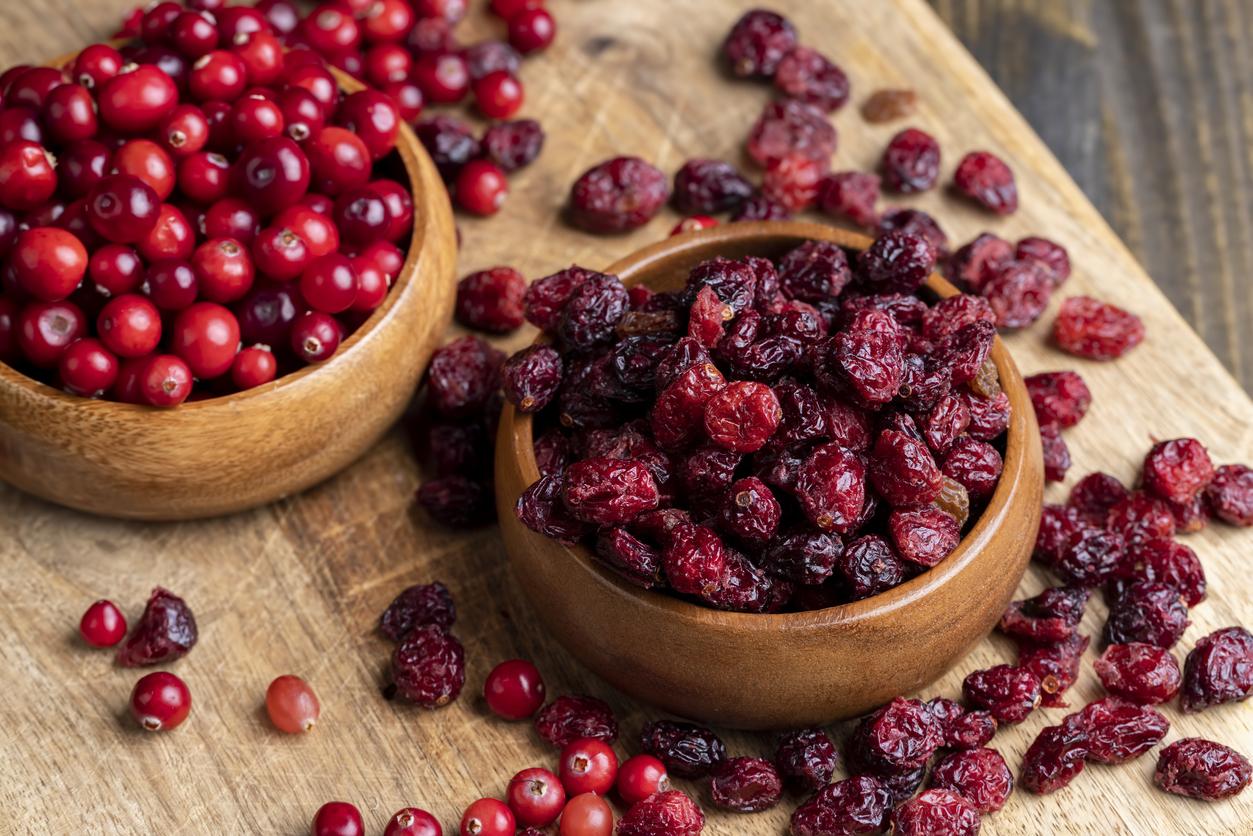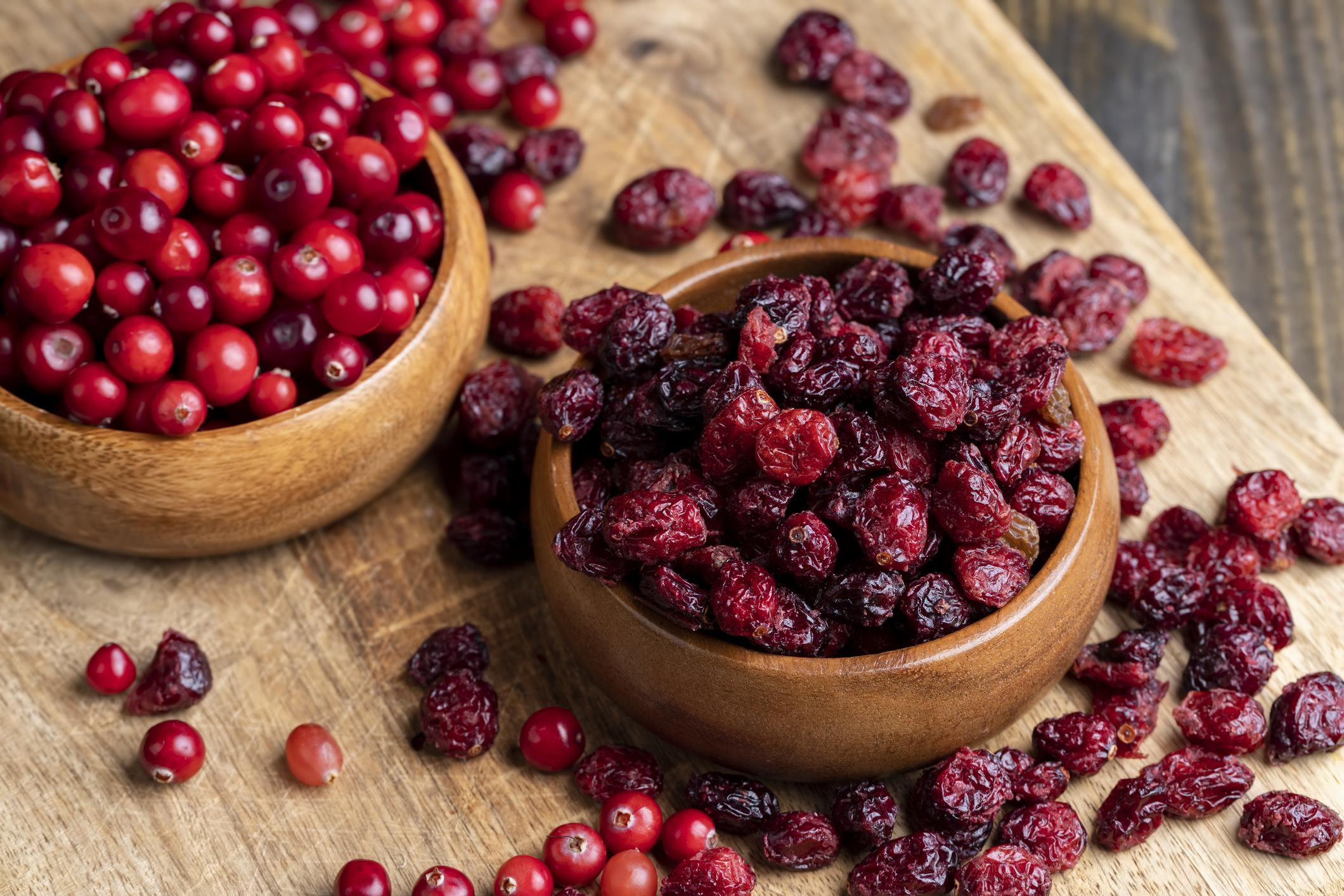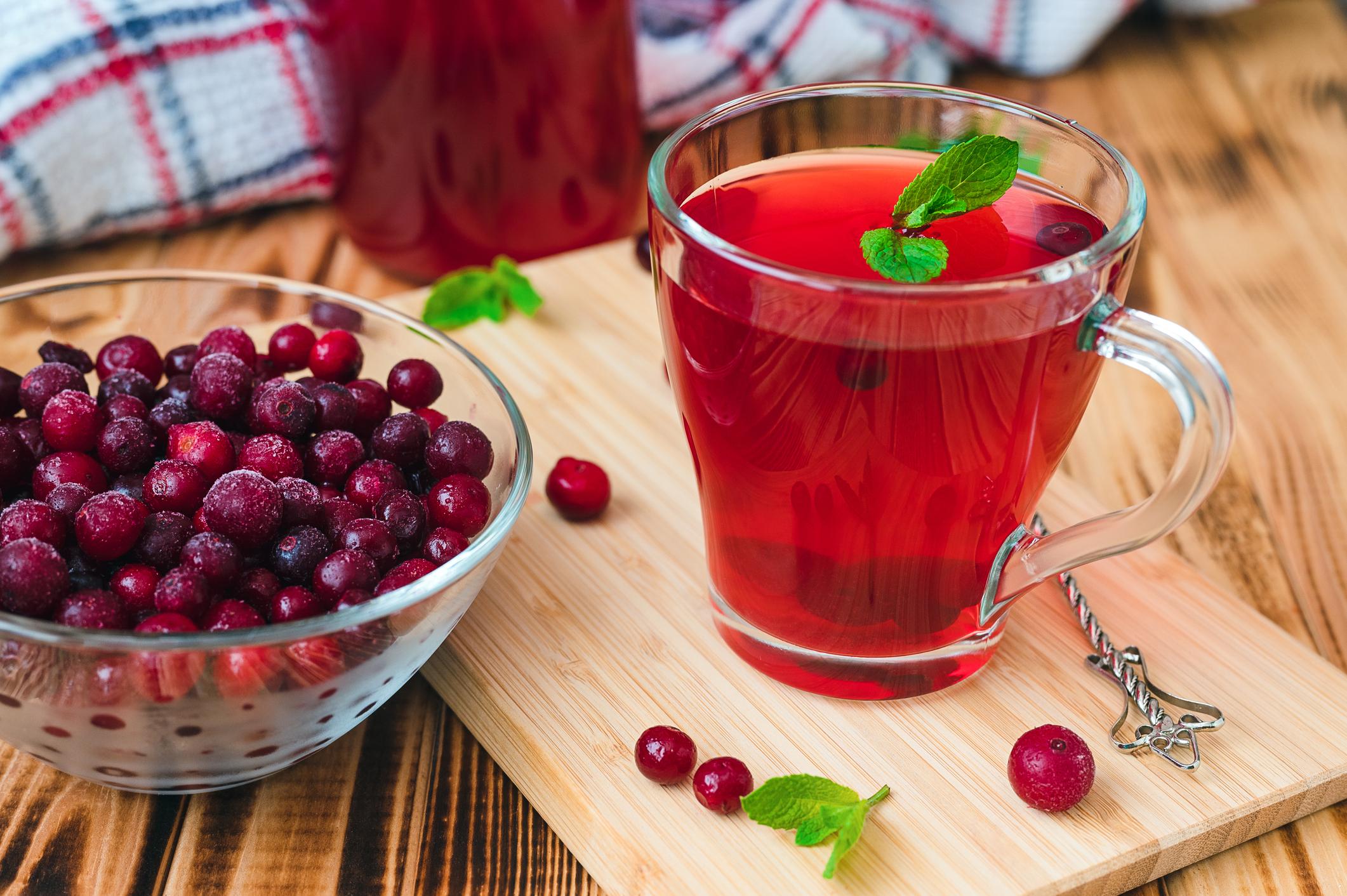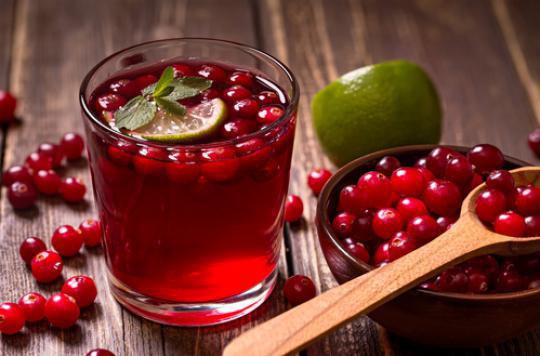Presentation of the cranberry
The cranberry is frequently referred to by its English name: cranberry. This shrub produces juicy berries. Frequent in North America, where it is an important cash crop, it is also called Grande Airelle Rouge or Atoka in Quebec. It is savored in the form of juice, coulis, candied or dehydrated fruit, and it is used in the composition of many traditional dishes, eaten in particular during Thanksgiving festivities.
If the cranberry is now exported around the world, it is not only for its flavor, but also for its benefits in herbal medicine. Its fruits are rich in acids– benzoic, oxalic, citric and malic – and in vitamin C. They also contain flavonoids, anthocyanidins and tannins. They owe their virtue, however, to CAP (Where proantocyanidins), antioxidants that significantly reduce the adhesion of bacteria to the urinary walls.
Properties and benefits of cranberries
The cranberry has enjoyed great popularity in recent years. It is credited with virtues that have not been scientifically proven: at present, its interest in controlling cholesterol levels and in preventing cardiovascular disease remains to be demonstrated.
Consumed in sufficient quantity and in combination with a suitable antibiotic, cranberries are, on the other hand, of interest in the case of recurrent urinary tract infections by limiting the duration and intensity of the infection. Indeed, D-mannose, a sugar it contains, binds to the cells of the bladder wall and prevents bacteria from adhering to it.
It also helps to eliminate helicobacter pylori, a germ responsible for gastric and duodenal ulcers.
Studies tend to prove that thanks to its richness in polyphenols and in salicylic acid, cranberry helps prevent tumors and the formation of blood clots.
Use of cranberry
Cranberry consumption is mainly recommended as a preventive measure, both to limit the risk of urinary tract infections and to reduce the risk of tumours. The proantocyanidin contained by the fruit also helps to limit the risk of cavities and limit the formation of dental plaque.
Cranberries are consumed in the form of juice (100% pure) or dried or candied fruits. However, according to the threshold set by the ANSM (National Agency for the Safety of Medicines and Health Products), you must consume 36 mg of PAC per day for one week per month or continuously over several months to benefit from its benefits, which is equivalent to 2 g of dry fruit extracts. It may therefore be wise to opt for food supplements, for example in capsules, by scrupulously referring to the instructions.
Cranberry contraindication
Cranberry consumption can cause side effects in case of overdose – including diarrhea.
In addition, its oxalic acid content rapidly increases the level of oxalates in the
urine and should therefore be avoided in case of calcium oxalate type kidney stones. (in this case, we will prefer free D-mannose).
The consumption of cranberry is also to be excluded in case of blood thinning treatment (anticoagulants and aspirin), in case of allergy to aspirin and in case of predisposition to kidney stones.















-1634287397.jpg)


